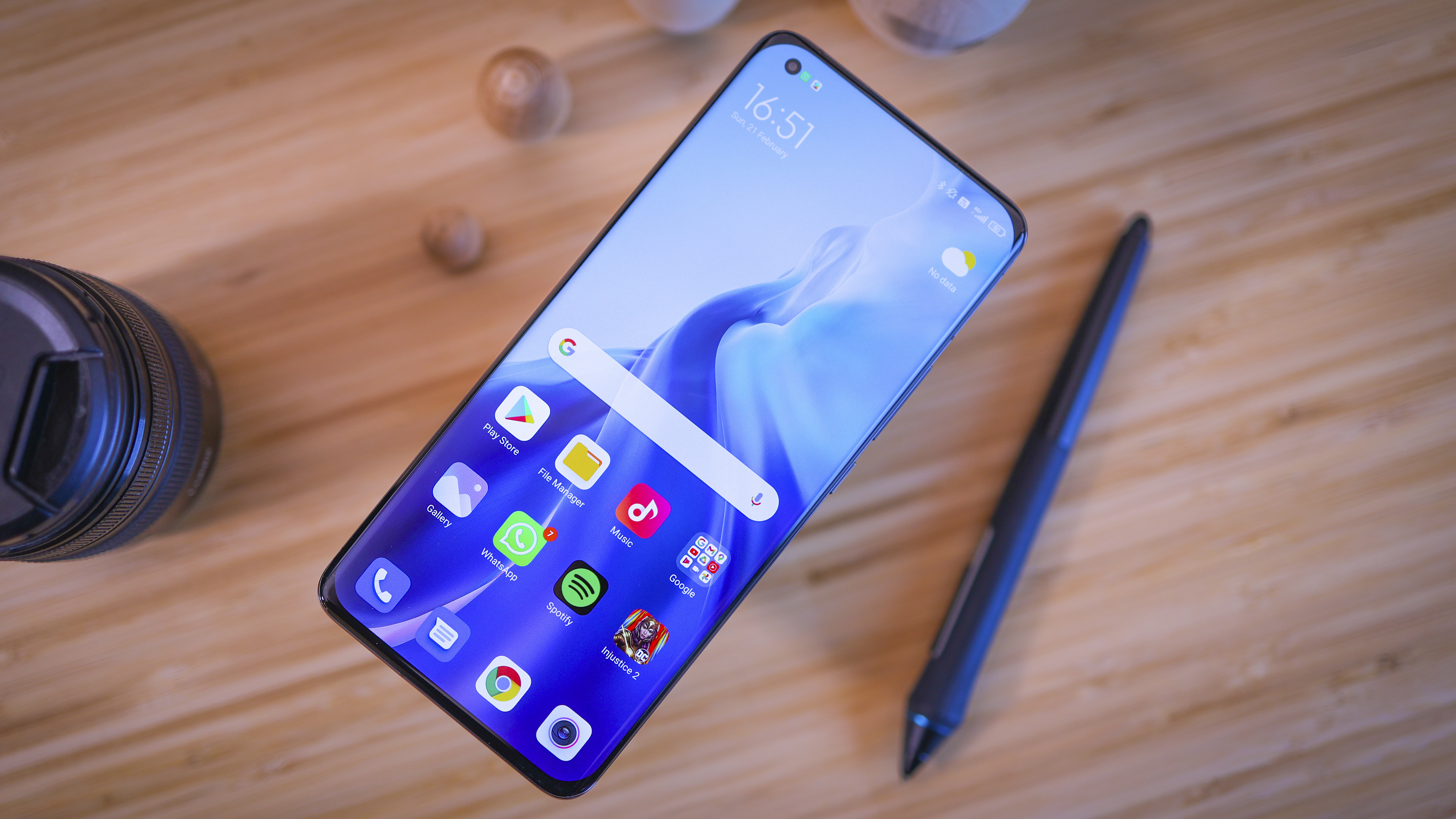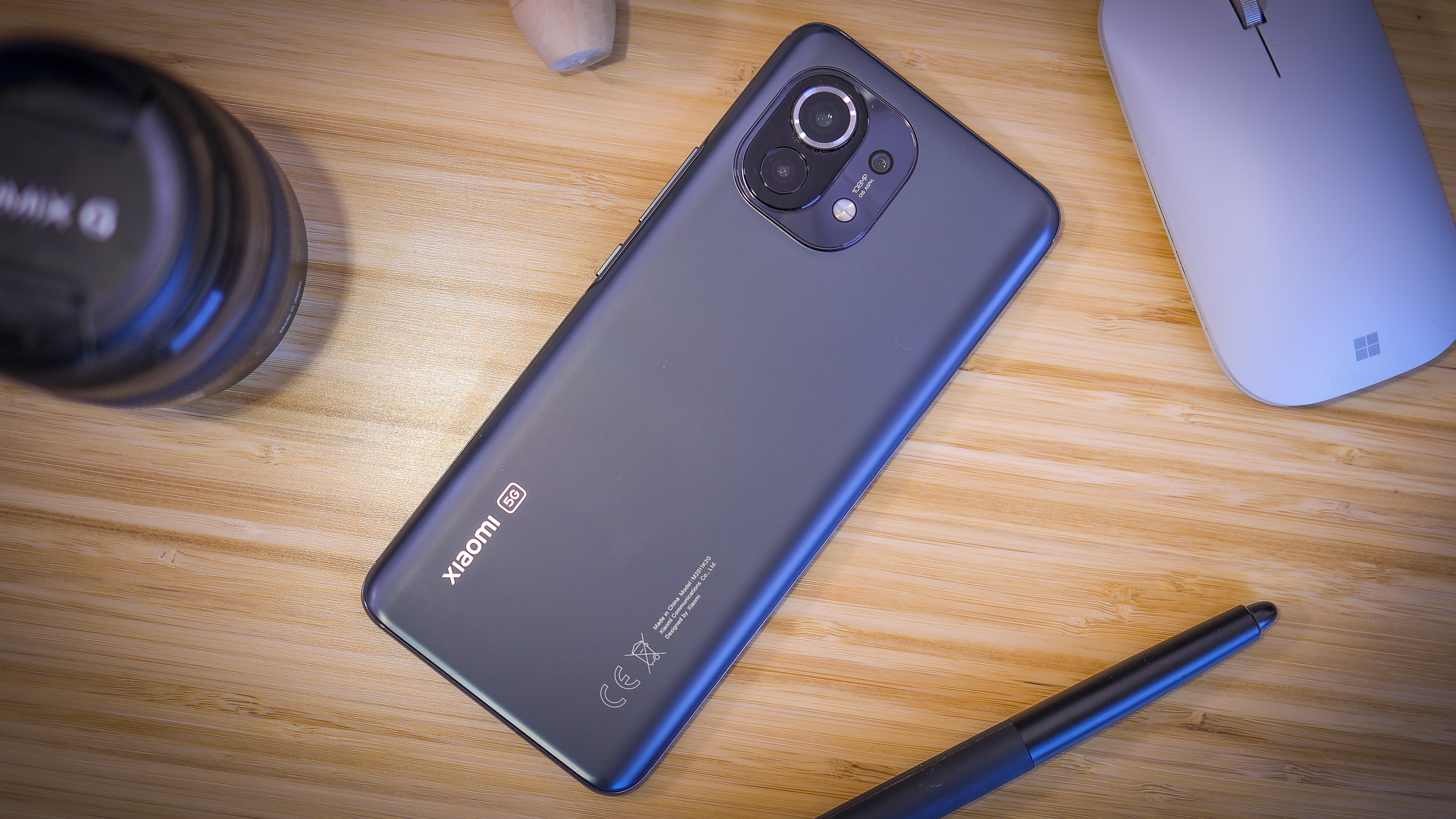Digital Camera World Verdict
The Xiaomi Mi 11 is one of the best value flagships on the market for anyone after pure power. As a camera phone, it’s also respectable with its 108MP main camera and competent macro capabilities. At €749 (roughly $900 or £650), with its Snapdragon 888 power and sleek design, matched with a gorgeous display, there’s very little to complain about from a hardware point of view, but as with other Xiaomi phones, occasionally buggy software lets the phone down.
Pros
- +
Premium design
- +
Sharp, expansive display
- +
Flagship power
Cons
- -
No telephoto camera
- -
Occasionally buggy interface
- -
Mediocre fingerprint scanner
Why you can trust Digital Camera World
The Xiaomi Mi 11, and indeed the Xiaomi brand’s rise to prominence may not be two things many in the UK or North America know much about. Xiaomi doesn’t sell phones in the US, and it’s still a relatively minor player in phone shops in old Blighty. That said, the rest of the world is sipping that Xiaomi tea and loving it, with the brand outselling Samsung to hit the number one spot in Spain last year, beating Honor to make number two in Russia, and hitting number three globally on the shipments chart.
Leading the charge for the Xiaomi portfolio of phones in 2021 is the Mi 11 Pro. With its 10-bit 6.81-inch display, Qualcomm Snapdragon 888 flagship power, and fancy design.
Having been let down by user interface quirks in the past, Xiaomi phones have seldom scored a perfect 5/5, despite featuring some excellent hardware. Can the Xiaomi Mi 11 win on all fronts and impress us enough to score big and claim the title of best camera phone of 2021?
Xiaomi Mi 11: Design and screen
Slightly wider than many flagships these days, the 20:9 aspect ratio screen on the Mi 11 is a decent middle ground between wide and ultra-wide screen.
With a 6.81 display size, the Mi 11 is a large smartphone, but it isn’t too unwieldy, owing to its relatively slender 8.1 mm depth and tapered curves either side. The screen’s curved, as is the glass back, and they sandwich a metal frame, making for a substantial, but comfortable in-hand experience.
Design highlights include Gorilla Glass Victus protection on the front, a Gorilla Glass 5 back, an aluminum frame, and color options including Horizon Blue, Cloud White, Midnight Gray, Special Edition Blue, Gold, Violet
With a phone like the Mi 11, whose bezel’s are absolutely tiny, the screen becomes an extension of the design and we’ve got to say, it’s one of the most enjoyable viewing experiences around. With its 120Hz AMOLED panel, it’s smooth, deep, and punchy. With a peak brightness of 1500 nits, it also beams, and thanks to a 515-pixel density, is sharp too.
The best camera deals, reviews, product advice, and unmissable photography news, direct to your inbox!
• The best Xiaomi phone guide
Xiaomi Mi11: Cameras
The Xiaomi Mi 11’s main camera features a familiar 108 MP sensor with an f/1.9, 26mm lens. The Samsung ISOCELL Bright HMX sensor is the same as seen on the Xiaomi Mi 10T Pro, with a 1/1.33" size and 0.8µm pixels. Combining PDAF and OIS, there’s every chance that for the most part, as with the Mi 10T Pro, its results will impress.
With a 13 MP, f/2.4 ultra-wide camera, the Mi 11 switches things up, going from an uber-pixeled sensor to a significantly smaller 1/3.06" offering. Combining a 123˚ field of view and support for up to 4K video and night mode though, it should still prove a useful part of the camera’s arsenal of lenses.
There’s no telephoto camera on the Mi 11, so the third camera on the back consists of a 5 MP sensor combined with a macro lens. Getting specific, it’s an f/2.4 macro lens with autofocus, making it instantly better than most cheap macro options on the market. Matched with a tiny 1/5.0”, it still manages to sport respectable (for mobile) 1.12µm pixels, given its low resolution.
With a front camera resolution of 20MP, combined with a 27mm focal length and an f/2.2 aperture, there’s nothing particularly standout about its selfie camera on paper. What is standout (though not amongst 108MP smartphones) is the fact the Mi 11 can shoot in 8K, and capture HDR video at up to 4K.
Xiaomi Mi11: Camera performance
Detail from the main 108MP camera on the Mi 11 Pro can be monumental for a smartphone in the right environment. The Samsung sensor powering its wide-angle snaps is reliable when it comes to well-lit scenes, and has some very likable characteristics, as seen on the Samsung Galaxy S21 Ultra 5G. These range from shallower depth than most mobile cameras, through to brilliant amounts of information when focus locks on. Unlike the S21 Ultra, which downsamples photos to around 12MP, the Mi 11 captures pictures at 27MP, with less aggressive pixel-binning.
Color and saturation isn’t as zingy as shots from Samsung phones have historically been, with Xiaomi taking a more measured approach to processing. They’re still nicely contrasted and look pleasing, even if they do need an edit for saturation fans to get the best from them.
Noise handling is impressive given the resolution the Mi 11 shoots at, however, what you lose when the lights drop is tonal nuance and dynamic range, as well as, on occasion, clarity. The Mi 11 seems to keep the shutter open that bit longer than might be needed for a clear shot. That said, a steadied hand can deliver stunning results even in dimmer settings, so the possible reticence to up the ISO could also work in the camera’s favor, depending on the type of photographer you are.
We love an ultra-wide camera, and we really love an ultra-wide that has autofocus. Unfortunately, the Mi 11’s secondary ultra-wide camera doesn’t sport AF, so it’ll be for landscapes and distanced group shots primarily. Detail in its photos is respectable, but not class-leading, and the same can be said of dynamic range. On the plus, it does work well in night mode when steadied on a surface.
The Mi 11’s macro camera is one of the best we’ve used on a phone, despite a low 5MP resolution. It’s a versatile performer with a focus range between roughly 2cm and 10cm, and it delivers decent results even in middling light, unlike most macro-laden handsets.
Video from the Mi 11 is shot at up to 8K resolution, with image stabilization kicking in even at the maximum resolution which is impressive. You can capture a full-resolution image when filming, which is also handy, and when 8K (30fps) is overkill, you can switch to 4K (60 or 30fps). As for the selfie camera, it’s decent, but definitely not a best-in-class option, falling behind Apple, Huawei, and Samsung’s finest.
Xiaomi Mi 11: Additional specs
Powered by a Qualcomm Snapdragon 888 paired with 8GB or 12GB RAM, Xiaomi delivers stacks of oomph despite the Mi 11’s relatively low price, and performance is nippy as a result.
Running Android 11 with Xiaomi’s MIUI 12, the software experience has the potential for greatness. Loads of apps are supported out of the box, and the UI looks sleek and clean, with Xiaomi having removed the overbearing third-party ads. That said, it’s buggy. We found our interface disappeared twice in our week with the phone, and we were left with a wallpaper alone until everything had a chance to un-bug-out. WhatsApp notifications also displayed with the wrong name linked to a message.
Additionally, there are some elements that are just too brazen when it comes to mimicking the competition. iOS’s control center? Fine, but at least call it something different. Also, when gaming on the phone, screen responsiveness let us down at times, working well on other occasions, and terribly on others. This could be owing to the fact we reviewed an early version of the phone, but it’s still worth flagging.
On the plus, if you can handle a few quirks, you’ll get 128GB or 256GB storage, 5G mobile data speeds, and a healthy 4600mAh battery that lasts all day with your Mi 11, which charges at up 55W, (100 percent in 45 min). The phone also supports the fastest wireless charging we’ve seen at 55W, delivering 100 percent in 53 min, and there’s 10W reverse wireless charging.
Xiaomi Mi11: Verdict
There’s something about the Xiaomi Mi 11 that makes us love it, and we think it’s that screen. With a reliable camera across the wide, ultra-wide and macro modules, a beautiful look and feel to the device itself, and that bright, bold, beaming display, Xiaomi’s nailed the hardware. The Mi 11’s price is also mighty nice. That said, what we don’t love is the UI. It may look slick, but it’s buggy, from WhatsApp notifications not displaying correctly, to occasional UI force closes, and while it’s got bags of potential, Xiaomi needs to iron out the kinks before it can hope for a higher rating.
Read more:
• Best camera phone in 2021
• Best budget camera phones
• Best iPhone for photography
• Best burner phone
• Best 5G phone
• Best phablets
• Best flip phones
• Best phablets
Basil Kronfli is a freelance technology journalist, consultant, and content creator. He trained in graphic design and started his career at Canon Europe before moving into journalism. Basil is also experienced in video production, independently running the YouTube channel TechEdit, and during his time at Future, he worked alongside the Digital Camera World team as a senior video producer.













